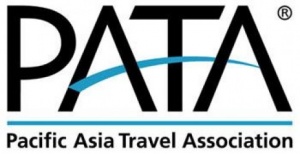PATA: 2012 was a record year for Asia/Pacific tourism

Asia and the Pacific continued as a hot spot for international tourism in 2012, attracting what is expected to be in excess of 350 million international visitor arrivals, expanding its collective inbound count by more than 5% and generating more than 18 million additional foreign visits, year-on-year. This is according to preliminary results released today by the Pacific Asia Travel Association (PATA).
This is the third consecutive year in which foreign arrivals growth has remained positive for the region.
Of the 40 separate destinations covered, only 5 reported contractions for the year. Most of those were relatively marginal for the region as a whole. The only exception was China, which, with a contraction in growth of 2.2%, is estimated to have lost around 3 million international arrivals (foreign and compatriot) from its 2011 total international inbound count.
The picture is quite different for foreign arrivals to China, however (i.e., excluding compatriot arrivals). The year 2012 saw an increase of 1.6% in that inbound volume, year-on-year.
Southeast Asia was the strongest performer in 2012 in annual percentage growth terms, with a gain of 9.9% for the year. This equated to an increase of more than 8 million additional arrivals over the previous year and pushed the ASEAN aggregate international inbound count to almost 89 million.
ADVERTISEMENT
Within this sub-region, Myanmar had a staggering increase of almost 52% in arrivals, while Cambodia and Lao PDR reported gains of 24% and 22% respectively. All 3 destinations created new records with Myanmar breaking the million arrivals mark (in total) for the first time. Cambodia and Lao PDR both also broke the 3 million mark. They were not alone either as every destination within the ASEAN region set new highs in terms of international arrivals.
After several years of strong double-digit growth rates, South Asia is now settling back somewhat, but still returning strong gains; 2012 for example saw growth of 6.6% and an increase of well over half-a-million additional international arrivals. Sri Lanka, with growth of almost 18% saw its foreign arrivals count pass the one million mark, while the Maldives fell just short of it. India remains the titan within South Asia, however, with more than 6.6 million arrivals and a year-on-year gain of close to 340,000 additional foreign arrivals, some 59% of the total additional increase in the arrivals volume to the sub-region.
Even with the contraction in total international arrivals into China, Northeast Asia still maintained a growth rate of almost 4% for the year. It dominated the visitor increase count by receiving close to 8.5 million additional international arrivals year-on-year.
Japan turned in the strongest percentage growth with a gain of 35% for the year, a performance that saw the destination recoup the losses in visitor arrivals following the tsunami of 2011 and move once again into record arrivals territory. Chinese Taipei, Hong Kong SAR, and Korea (ROK) also added to the sub-regional performance with growth increases of 20%, 16%, and 14% respectively.
After a somewhat mediocre performance in 2011 (+0.3% growth), the Pacific bounced back strongly in 2012 to post a collective gain across eighteen destinations of 6%. This in turn equated to an increase of better than 1.1 million additional international arrivals to the sub-region, which now collectively boasts an international inbound volume tantalizingly close to 20 million.
The Northern Marianas (+17.4%), Vanuatu (15.1%), and Guam (+12.8%) reported the strongest percentage gains, while Hawaii, Australia, and Guam posted the greatest gains in additional arrivals for the year.
Across the Asia/Pacific region, preliminary figures suggest that the top 5 destinations, by growth in international visitor arrivals, were: Myanmar, Japan, Cambodia, Lao PDR, and Chinese Taipei; each had a year-on-year increase of 20% or better.
In volume terms, there were 6 particularly significant outcomes with Hong Kong SAR, Thailand, Japan, Singapore, Korea (ROK), and Chinese Taipei each securing in excess of one million additional arrivals in 2012; the SAR of Hong Kong saw 6.7 million additional international arrivals.
Martin J. Craigs, CEO of PATA, said: “Asia and the Pacific continues to add substantially to the global international arrivals count. We expect that to continue for some time yet. The players shift and change, of course, and we can expect some movement in terms of generating and receiving markets. But across the region we expect substantial gains in both the volume and the value of these movements for some time yet.”
The PATA CEO added: “How we measure and determine the impacts of this growth in traffic is becoming more important, however. That is why PATA is working to promote the concept of the Complete Visitor Economy throughout its membership and across the wider industry.”

